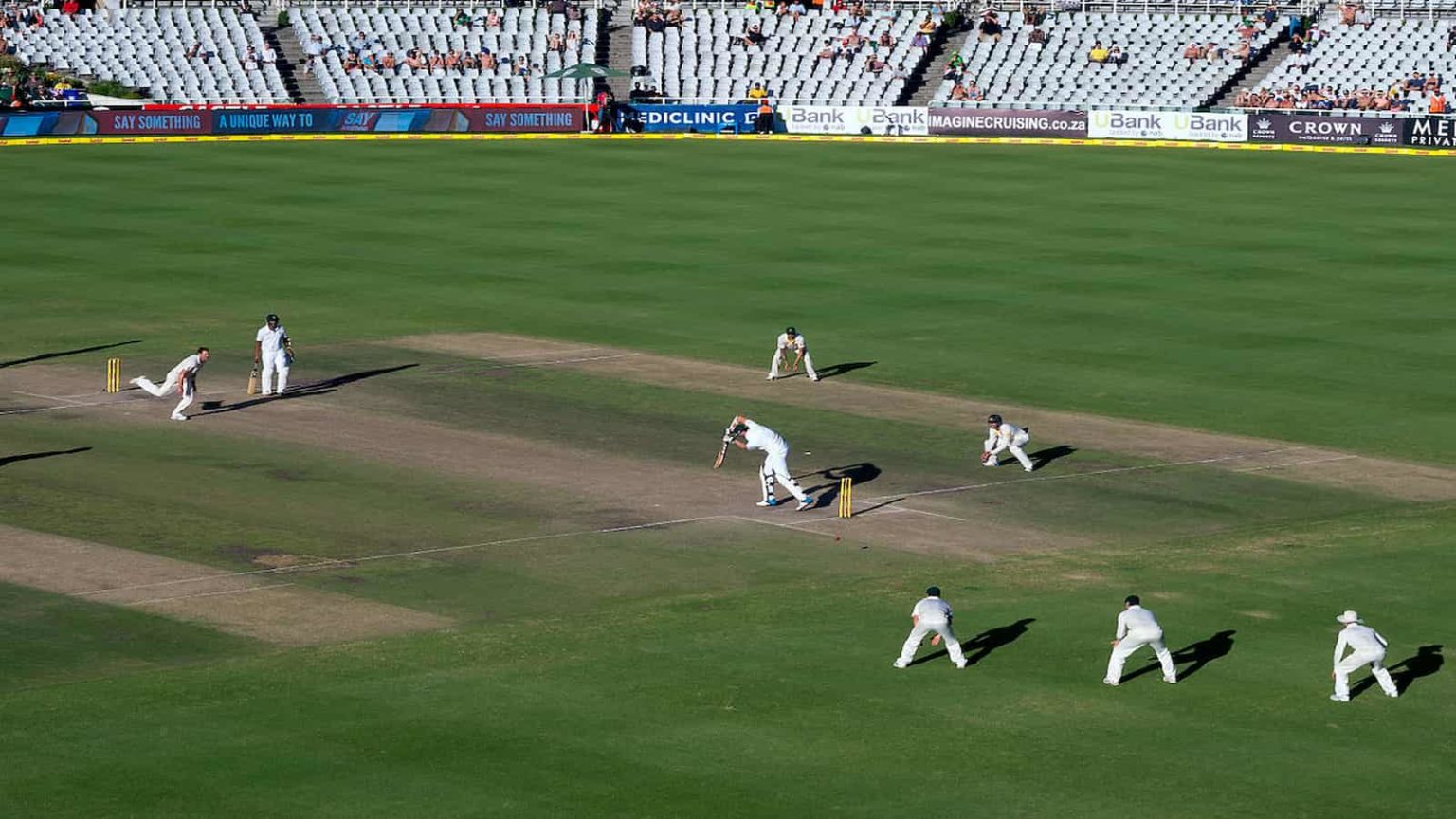As a rookie hitter in cricket, it can be challenging to know where to start when it comes to improving your batting skills. With so many different techniques and strategies out there, it can be overwhelming to figure out what works best for you. However, with a few game-changing batting tips, you can unleash your inner slugger and start hitting those balls out of the park.
One of the most important things to focus on as a rookie hitter is your stance. Your stance sets the foundation for your swing and can greatly impact your ability to make solid contact with the ball. Make sure your feet are shoulder-width apart, your knees are slightly bent, and your weight is evenly distributed between your feet. Keep your eyes locked on the ball and your head still as you prepare to swing.
Another key aspect of successful batting is timing. It’s important to wait for the ball to come to you, rather than swinging too early or too late. Watch the ball closely as it approaches and try to time your swing so that you make contact at the right moment. Practicing your timing with a partner or a pitching machine can help you improve this crucial skill and become a more effective hitter.
Understanding the Basics
Grip and Stance
As a rookie hitter in cricket, it’s essential to understand the proper grip and stance to improve your batting skills. The grip is the way you hold the bat, and the stance is how you position yourself before hitting the ball.
To have a good grip, hold the bat with both hands, and place your top hand above the bottom hand. Ensure that the bat’s handle rests in the fingers, and not in the palm of your hands. This will give you better control and allow you to hit the ball with more power.
Your stance is vital to your balance, and it’s crucial to stand in a way that allows you to hit the ball with ease. Your feet should be shoulder-width apart, and your knees should be slightly bent. Your weight should be evenly distributed on both feet, and your head should be level.
Bat Swing Mechanics
The bat swing is the most crucial aspect of hitting the ball. The swing comprises three parts: the backswing, the downswing, and the follow-through.
The backswing is when you bring the bat back behind you. It’s essential to keep your head still and your eyes on the ball during this phase. The downswing is when you bring the bat forward and hit the ball. Ensure that you hit the ball with the middle of the bat for maximum power.
The follow-through is when you complete the swing after hitting the ball. It’s crucial to maintain your balance and follow through with your swing to ensure that you hit the ball with power and accuracy.
In conclusion, understanding the basics of grip and stance and bat swing mechanics is crucial for rookie hitters in cricket. Practice these fundamentals to improve your batting skills and become a game-changer in the sport.
Mastering the Batting Techniques
As a rookie hitter in cricket, mastering the batting techniques is crucial to becoming a successful player. In this section, I will discuss the three most important batting techniques that every player should master: front foot shots, back foot shots, and sweep shots.
Front Foot Shots
Front foot shots are played when the ball is pitched up to the batsman. To play a front foot shot, the batsman should move their front foot towards the ball and make contact with the ball with a straight bat. It is important to keep the head still and watch the ball closely to ensure a good shot.
Some common front foot shots include:
- Straight drive: hit the ball straight down the ground
- Cover drive: hit the ball through the covers
- Square drive: hit the ball through the point region
Back Foot Shots
Back foot shots are played when the ball is short and bouncing towards the batsman. To play a back foot shot, the batsman should move their weight onto their back foot and play the shot with a horizontal bat. It is important to keep the head still and watch the ball closely to ensure a good shot.
Some common back foot shots include:
- Pull shot: hit the ball towards the mid-wicket region
- Hook shot: hit the ball towards the square leg region
- Cut shot: hit the ball through the point region
Sweep Shots
Sweep shots are played when the ball is pitched outside the off stump and turning towards the leg side. To play a sweep shot, the batsman should move their weight onto their front foot and play the shot with a horizontal bat. It is important to keep the head still and watch the ball closely to ensure a good shot.
Some common sweep shots include:
- Leg sweep: hit the ball towards the mid-wicket region
- Off sweep: hit the ball towards the square leg region
In conclusion, mastering the batting techniques is crucial to becoming a successful cricket player. By practicing and perfecting these techniques, you can become a game-changing hitter and lead your team to victory.
Improving Your Timing
As a rookie hitter in cricket, improving your timing is crucial to becoming a successful batter. With the right practice drills and mental preparation, you can take your batting skills to the next level.
Practice Drills
To improve your timing, it’s important to practice hitting a variety of different balls. Here are a few drills that can help:
- Tennis Ball Drill: This drill involves using a tennis ball instead of a cricket ball. The tennis ball bounces differently, which can help you improve your reflexes and timing.
- Throwdown Drill: In this drill, a coach or teammate throws the ball to you from a short distance. This allows you to focus on your timing and footwork without worrying about the speed of the ball.
- Machine Drill: Batting machines can be set to different speeds and angles, allowing you to practice hitting a variety of balls. This is a great way to improve your timing and build confidence.
Mental Preparation
In addition to practice drills, mental preparation is also key to improving your timing. Here are a few tips to help you get in the right mindset:
- Visualize Success: Before you step up to bat, take a few moments to visualize yourself hitting the ball perfectly. This can help you build confidence and improve your timing.
- Stay Focused: It’s important to stay focused on the ball and block out any distractions. Try to stay relaxed and focused on the task at hand.
- Be Patient: Don’t rush your shots. Take your time and wait for the right ball to come along. This can help you improve your timing and increase your chances of success.
By incorporating these practice drills and mental preparation tips into your training routine, you can improve your timing and become a more successful hitter in cricket.
Game Day Strategies
Reading the Bowler
As a rookie hitter, it’s important to pay attention to the bowler’s body language and the trajectory of the ball. By doing so, you can anticipate the type of delivery and adjust your stance accordingly. Here are a few tips to help you read the bowler:
- Look at the bowler’s run-up: A longer run-up usually indicates a faster delivery, while a shorter run-up may indicate a slower delivery.
- Watch the bowler’s wrist: The position of the wrist can give you an idea of the type of delivery. For example, a straight wrist may indicate a fast, straight delivery, while a bent wrist may indicate a slower, spinning delivery.
- Observe the bowler’s grip: The way the bowler grips the ball can also give you a clue about the type of delivery. For example, a grip with fingers spread apart may indicate a slower, spinning delivery, while a grip with fingers close together may indicate a faster, straight delivery.
Adapting to Different Pitches
Different pitches can have different characteristics, which can affect your batting performance. Here are a few tips to help you adapt to different pitches:
- Assess the pitch: Before you start batting, take some time to assess the pitch. Look for any unevenness or cracks that may affect the bounce of the ball.
- Adjust your stance: Depending on the pitch, you may need to adjust your stance. For example, on a bouncy pitch, you may need to stand slightly taller to adjust for the extra bounce.
- Be patient: If the pitch is difficult, it’s important to be patient and wait for the right ball to hit. Don’t take unnecessary risks and try to hit every ball.
- Use your feet: If the pitch is slow, you may need to use your feet to get to the pitch of the ball. This can help you generate more power and hit the ball further.
Remember, practice makes perfect. By incorporating these game day strategies into your training, you’ll be able to unleash your inner slugger and become a better hitter in cricket.
Maintaining Your Equipment
Bat Care
As a rookie hitter, it’s important to take care of your cricket bat to ensure it lasts as long as possible. Here are some tips for maintaining your bat:
- Keep your bat dry and avoid exposing it to moisture for extended periods of time. This can cause the wood to warp or crack.
- Store your bat in a cool, dry place when not in use. Avoid leaving it in direct sunlight or in a hot car.
- Clean your bat after each use with a soft cloth and some warm water. Avoid using harsh chemicals or solvents as they can damage the wood.
- Oil your bat regularly to keep the wood supple and prevent it from drying out. Use a bat oil that is specifically designed for cricket bats.
Choosing the Right Bat
Selecting the right cricket bat is crucial for any hitter, whether you’re a rookie or a seasoned pro. Here are some factors to consider when choosing a bat:
- Weight: Choose a bat that you can comfortably swing without sacrificing power. A heavier bat may give you more power, but it can also tire you out more quickly.
- Size: Make sure the bat is the right size for you. It should be comfortable to hold and swing, and the blade should be no wider than four and a quarter inches.
- Wood: There are several types of wood used to make cricket bats, each with its own characteristics. English willow is the most common and is known for its lightness and durability.
- Handle: The handle should be comfortable to grip and should absorb shock well. Look for a handle made of high-quality cane.
By taking care of your bat and selecting the right one for your needs, you can unleash your inner slugger and become a formidable hitter on the cricket pitch.
Conclusion
In conclusion, these batting tips can help rookie hitters improve their game and unleash their inner slugger. By practicing proper technique, focusing on footwork and timing, and using the right equipment, you can increase your chances of hitting the ball and scoring runs.
Remember to stay relaxed and confident at the plate, and don’t be afraid to experiment with different stances and grips to find what works best for you. Keep your eyes on the ball, stay balanced, and don’t try to overthink your swing.
With dedication and hard work, you can become a successful hitter in cricket. Keep practicing, stay positive, and always strive to improve your skills. Good luck!

